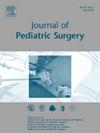气管滑梯成形术治疗先天性气管狭窄后的生活质量及其临床影响因素。
IF 2.5
2区 医学
Q1 PEDIATRICS
引用次数: 0
摘要
目的:对先天性气管狭窄(CTS)患者行气管滑梯成形术后的长期预后报道甚少。术后生活质量(QOL)及其影响因素的数据有限。本研究旨在评估CTS患者行气管滑梯成形术的长期生活质量,并确定相关的影响因素。方法:回顾性分析1998年1月至2021年11月在我院行CTS气管滑梯成形术的62例患者的医学问卷PedsQL4.0和VHI-30。结果:46例未行气管切开术,35例无呼吸道症状。14例患者在所有评估项目中均未出现异常。PedsQL 4.0总分与健康儿童无显著差异。在比较不同背景因素下患者和家长的PedsQL 4.0总分时,与差异显著相关的变量包括呼吸症状、生长迟缓、VHI-30评分低于8分。多元回归分析显示,VHI-30评分低于8分是影响患者和家长评分的最显著因素。背景因素的比较显示VHI-30在狭窄长度、术后拔管、当前气管造口术和呼吸道症状方面存在显著差异。Logistic回归分析显示,呼吸道症状是最重要的影响因素。结论:在所有年龄组中,气管滑梯成形术后CTS患者的生活质量普遍较好。然而,VHI-30评分升高与生活质量降低相关。有呼吸道症状的患者往往有较高的VHI-30评分和声音相关损伤。监测和处理呼吸和声音症状可以改善生活质量。本文章由计算机程序翻译,如有差异,请以英文原文为准。
Quality of Life and its Clinical Determinants After Slide Tracheoplasty for Congenital Tracheal Stenosis
Objective
Long-term outcomes following slide tracheoplasty in patients with congenital tracheal stenosis (CTS) have rarely been reported. Data on postoperative quality of life (QOL) and its contributing factors are limited. This study aimed to assess the long-term QOL in individuals who underwent slide tracheoplasty for CTS and to identify associated influencing factors.
Methods
The medical questionnaires, PedsQL4.0 and VHI-30, from 62 patients who underwent slide tracheoplasty for CTS at our institution from January 1998 to November 2021 were reviewed.
Results
Forty-six patients had no tracheostomy, and 35 reported no respiratory symptoms. Fourteen patients showed no abnormalities across all evaluated items. Total PedsQL 4.0 scores did not differ significantly from those of healthy children. When comparing the total PedsQL 4.0 scores of patients and parents across different background factors, variables significantly associated with differences included respiratory symptoms, growth retardation, and VHI-30 scores below 8 points. Multiple regression analysis showed that VHI-30 scores below 8 points were the most significant factor influencing both patient and parent scores. A comparison of the background factors revealed significant differences in VHI-30 for stenosis length, postoperative extubation, current tracheostomy, and respiratory symptoms. Logistic regression analysis showed that respiratory symptoms were the most important factor.
Conclusion
QOL in patients with CTS following slide tracheoplasty was generally favorable across all age groups. However, elevated VHI-30 scores were associated with a reduction in QOL. Patients with respiratory symptoms tended to have higher VHI-30 scores and voice-related impairment. Monitoring and addressing respiratory and voice symptoms may improve QOL.
求助全文
通过发布文献求助,成功后即可免费获取论文全文。
去求助
来源期刊
CiteScore
1.10
自引率
12.50%
发文量
569
审稿时长
38 days
期刊介绍:
The journal presents original contributions as well as a complete international abstracts section and other special departments to provide the most current source of information and references in pediatric surgery. The journal is based on the need to improve the surgical care of infants and children, not only through advances in physiology, pathology and surgical techniques, but also by attention to the unique emotional and physical needs of the young patient.

 求助内容:
求助内容: 应助结果提醒方式:
应助结果提醒方式:


